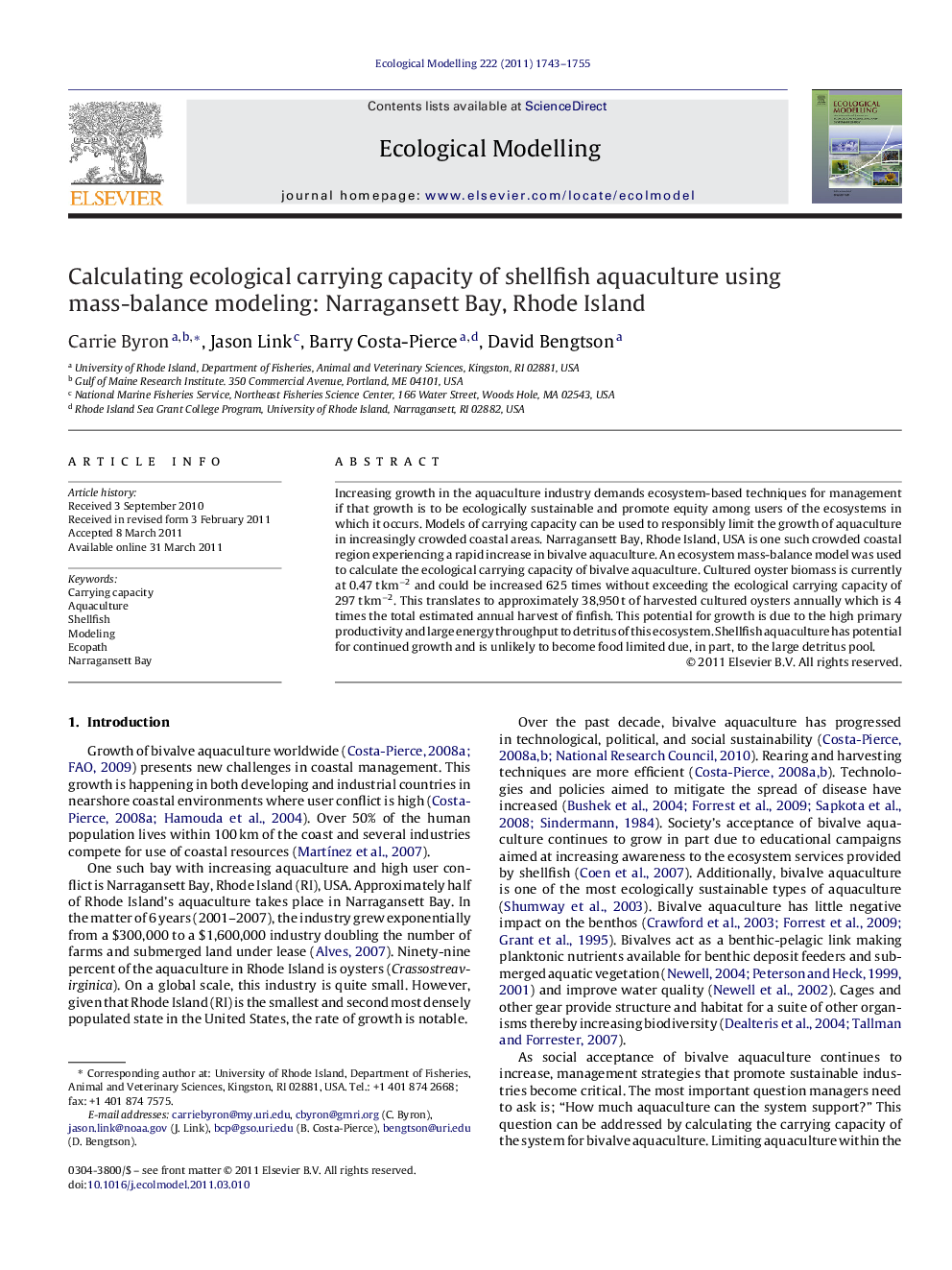| Article ID | Journal | Published Year | Pages | File Type |
|---|---|---|---|---|
| 4376835 | Ecological Modelling | 2011 | 13 Pages |
Increasing growth in the aquaculture industry demands ecosystem-based techniques for management if that growth is to be ecologically sustainable and promote equity among users of the ecosystems in which it occurs. Models of carrying capacity can be used to responsibly limit the growth of aquaculture in increasingly crowded coastal areas. Narragansett Bay, Rhode Island, USA is one such crowded coastal region experiencing a rapid increase in bivalve aquaculture. An ecosystem mass-balance model was used to calculate the ecological carrying capacity of bivalve aquaculture. Cultured oyster biomass is currently at 0.47 t km−2 and could be increased 625 times without exceeding the ecological carrying capacity of 297 t km−2. This translates to approximately 38,950 t of harvested cultured oysters annually which is 4 times the total estimated annual harvest of finfish. This potential for growth is due to the high primary productivity and large energy throughput to detritus of this ecosystem. Shellfish aquaculture has potential for continued growth and is unlikely to become food limited due, in part, to the large detritus pool.
► Ecological potential for increased bivalve aquaculture in an estuarine bay. ► Ecological carrying capacity equals 297 t km−2 in Narragansett Bay, RI, USA. ► Detritus is an important energy source for bivalves. ► Ecological carrying capacity models support an Ecological Approach to Aquaculture.
